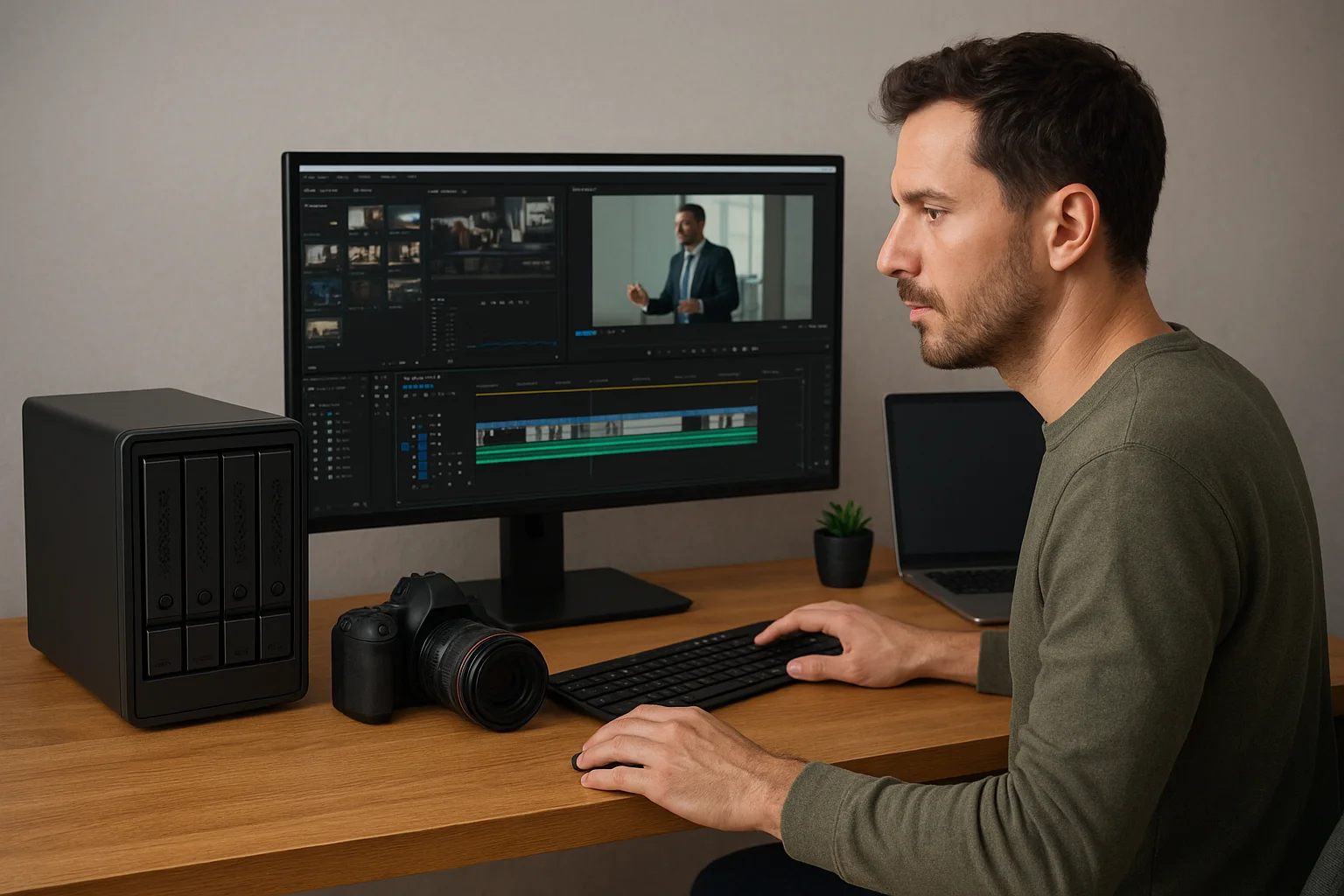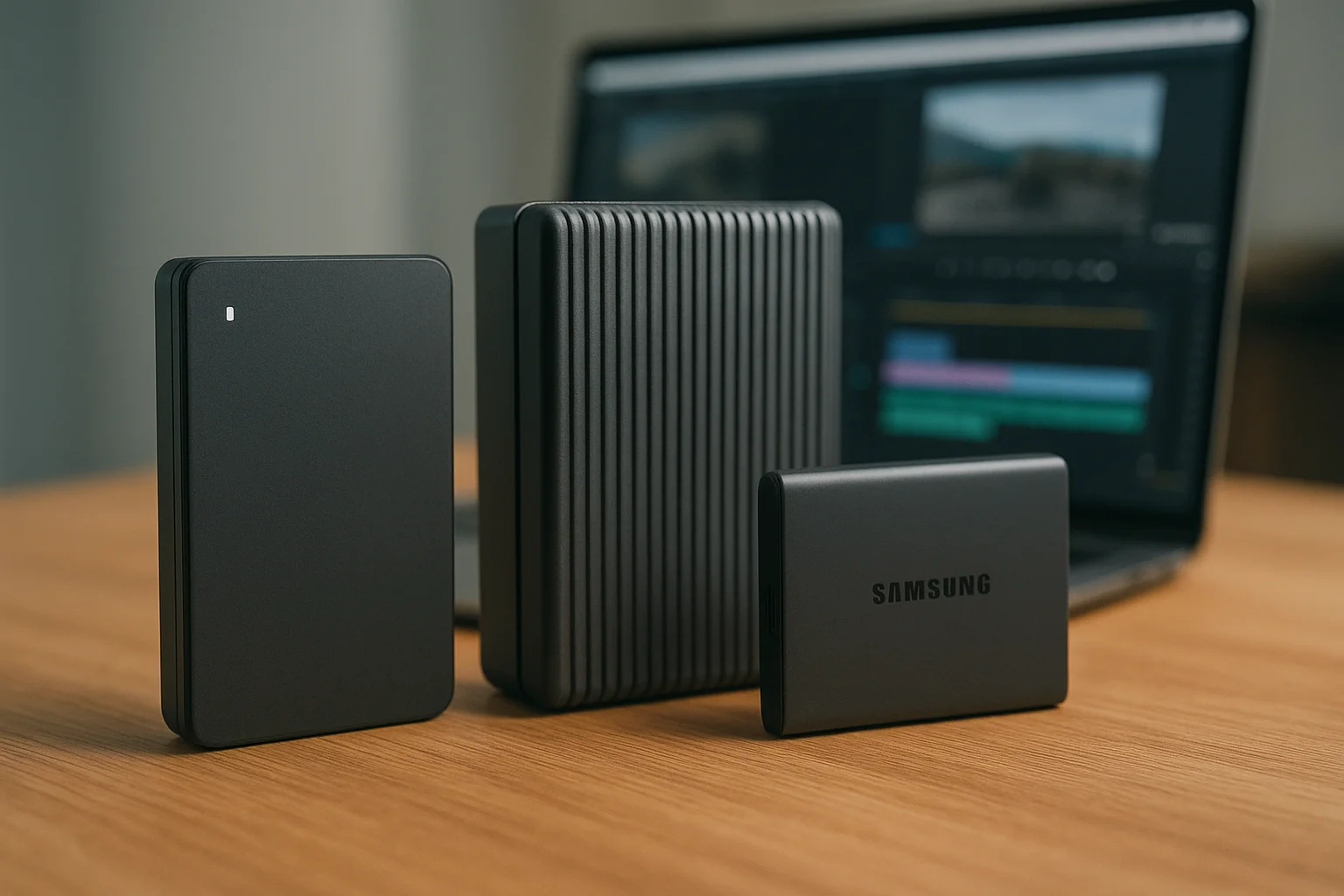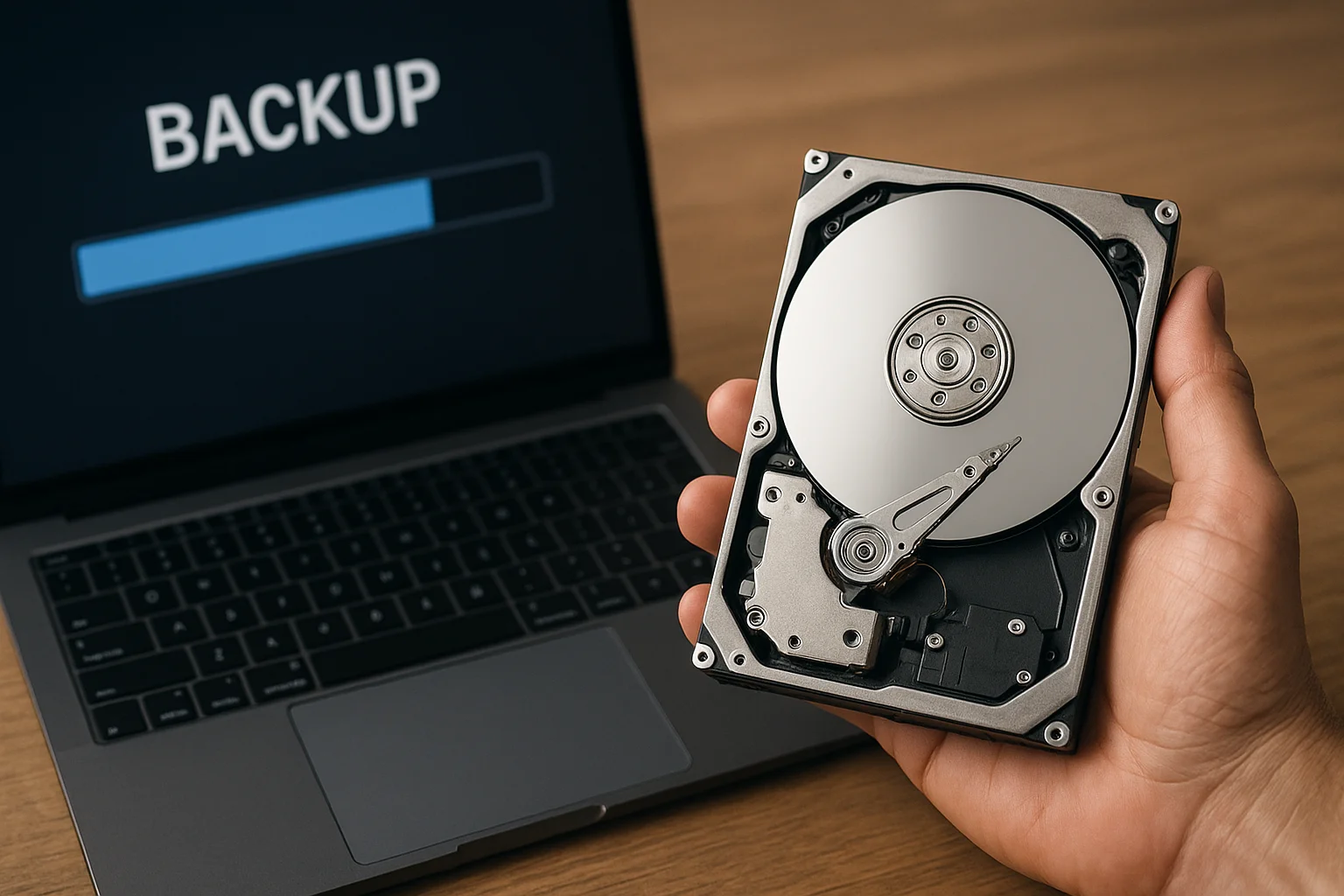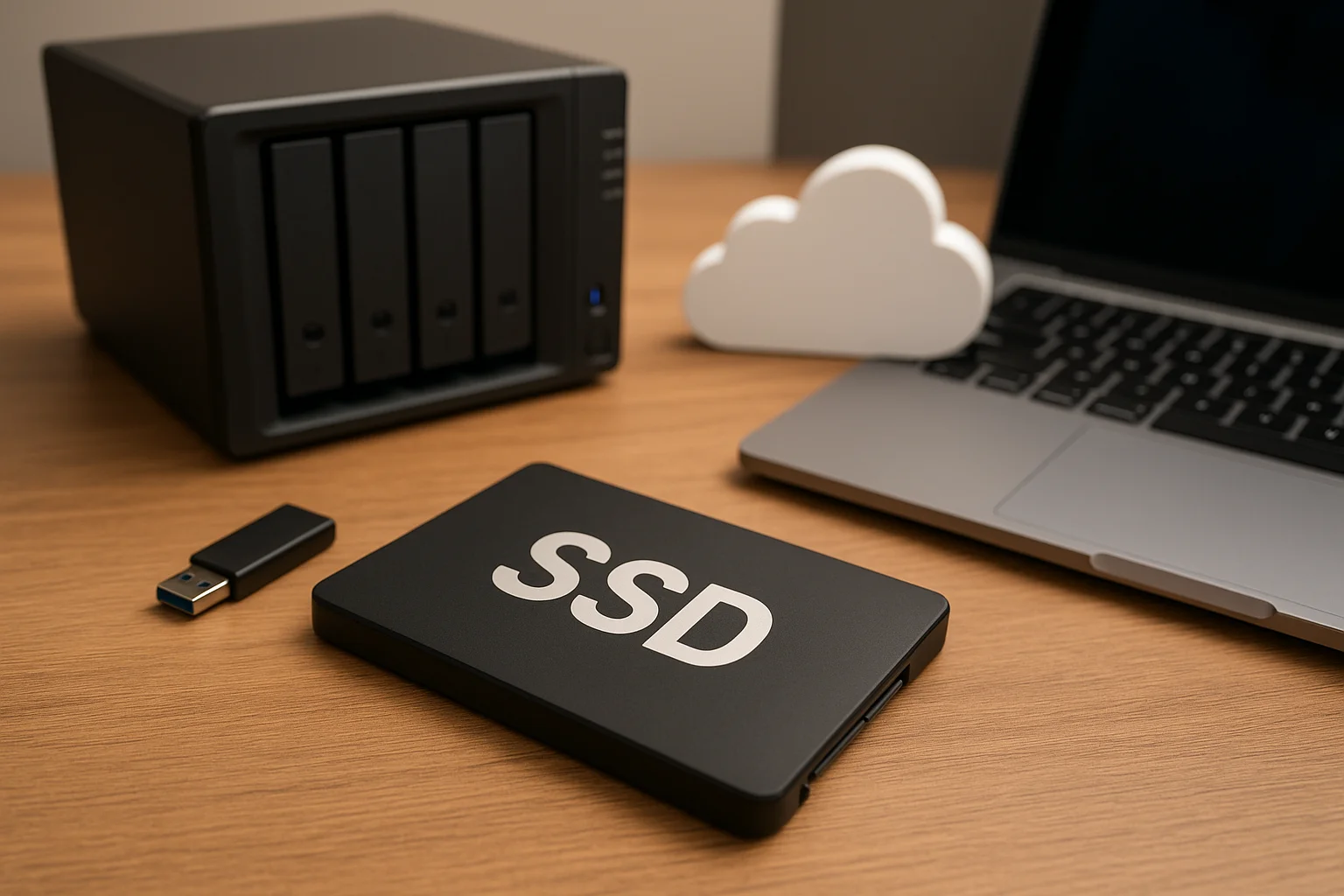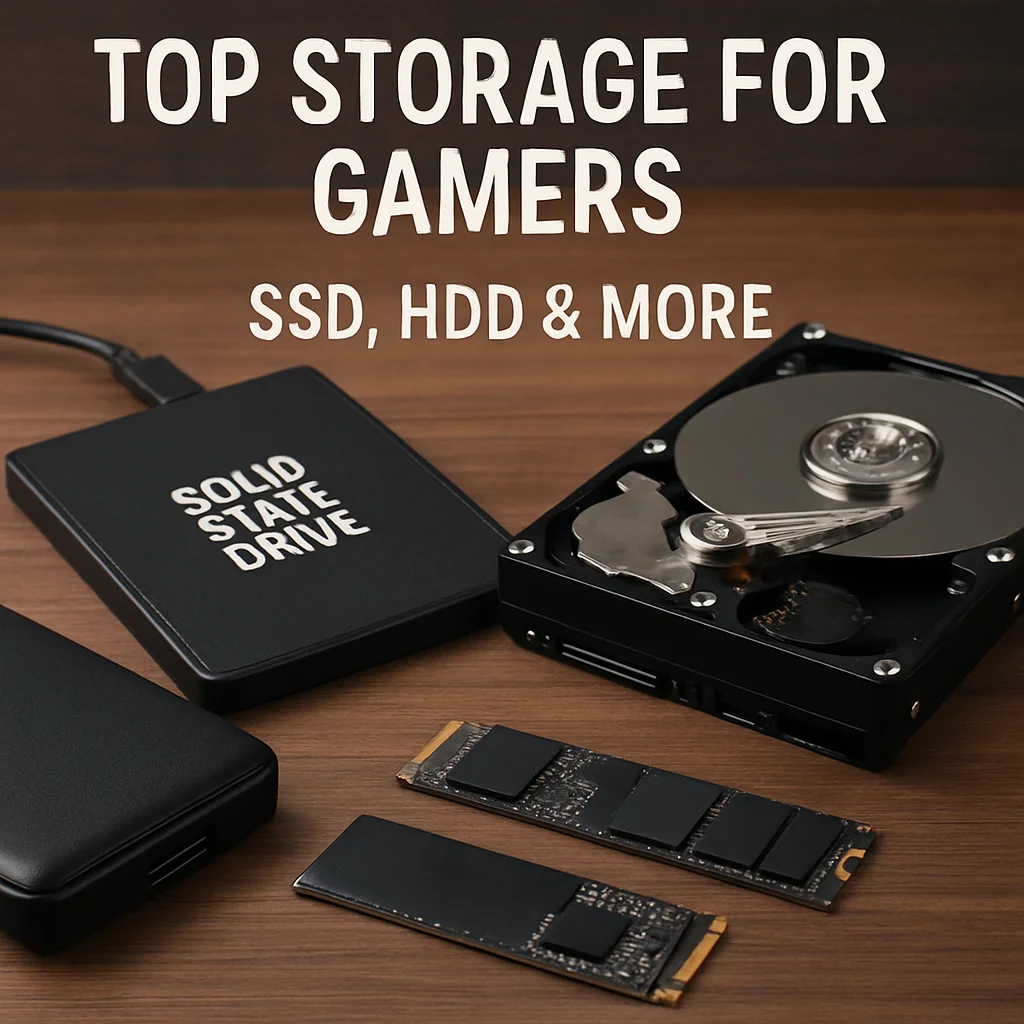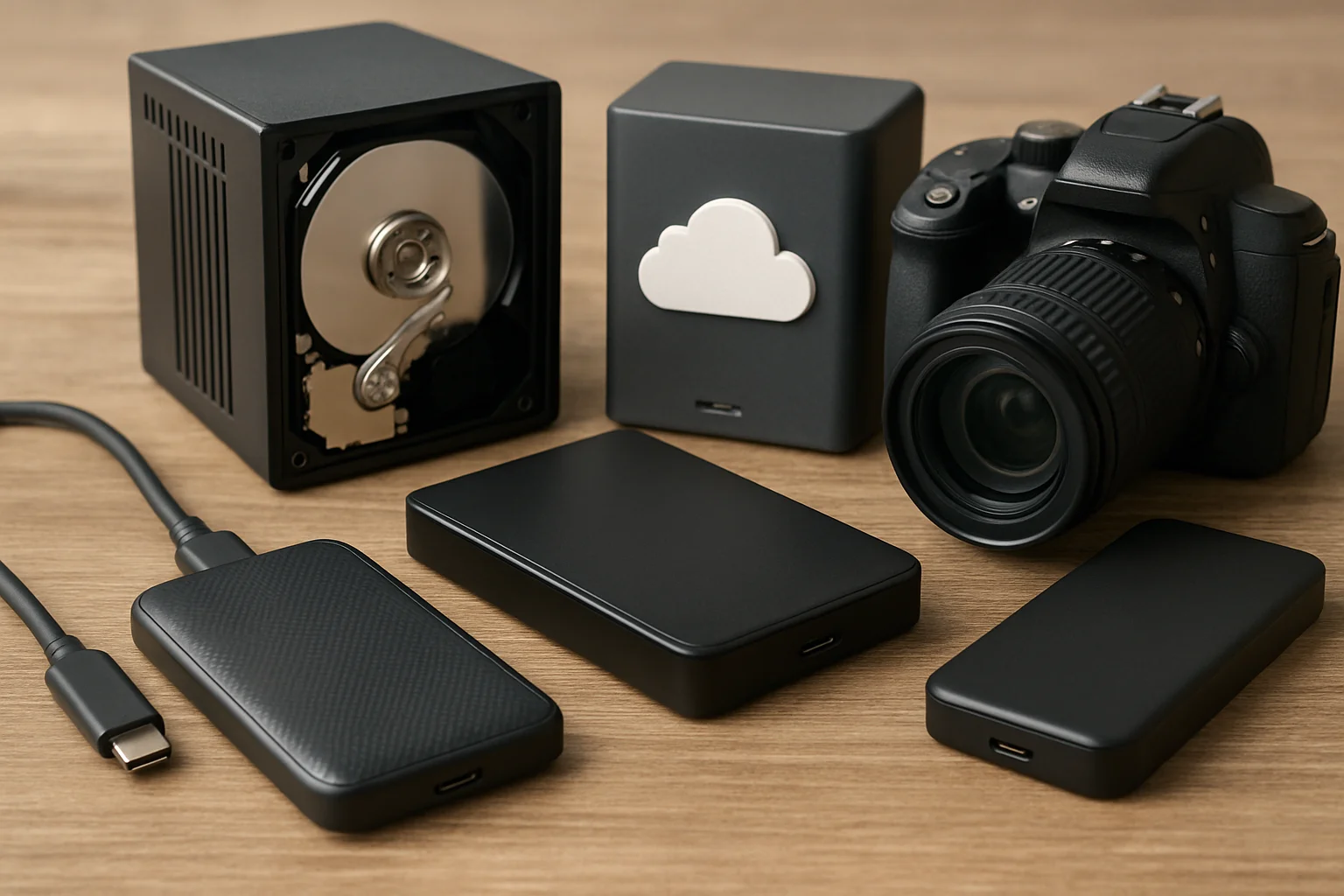Understanding the Basics: What is RAID?
RAID, which stands for Redundant Array of Independent Disks, is a technology that combines multiple physical hard drives or SSDs into a single logical unit to improve performance, data redundancy, or both. For content creators dealing with large files, RAID can significantly affect how quickly you can access, edit, and store your media.
The core idea behind RAID is to use multiple drives in a coordinated way. Depending on the configuration, data can be striped across drives to increase speed, mirrored to protect against drive failure, or a combination of both. Each approach has its own advantages and trade-offs.
RAID is typically categorized by different "levels," such as RAID 0, RAID 1, RAID 5, RAID 6, and RAID 10. Each level defines how data is distributed across the drives:
- RAID 0: Stripes data across multiple drives for maximum speed but offers no redundancy.
- RAID 1: Mirrors data on two or more drives, providing full redundancy but no speed gain.
- RAID 5: Combines striping with parity, offering a balance of speed, storage efficiency, and redundancy.
- RAID 6: Similar to RAID 5 but with double parity, allowing for two simultaneous drive failures.
- RAID 10: A combination of mirroring and striping, providing both high speed and strong redundancy.
RAID can be implemented via hardware or software. Hardware RAID uses a dedicated controller, which can offload processing from the CPU and offer better performance, while software RAID relies on the operating system and can be more flexible but sometimes slower.
Understanding these basics is crucial for content creators because the right RAID setup can impact editing speed, workflow efficiency, and data protection. Choosing incorrectly could lead to slower performance or increased risk of data loss.
Hardware vs. Software RAID: Which Should You Choose?
When setting up RAID for your content creation workflow, one of the key decisions is whether to use hardware RAID or software RAID. Both approaches allow you to combine multiple drives for speed, redundancy, or a combination of both, but they differ in performance, cost, flexibility, and ease of management.
Hardware RAID uses a dedicated RAID controller card or an integrated controller on a motherboard. This controller manages the RAID array independently from your computer’s CPU. One of the main advantages is performance: the RAID calculations, especially for parity in levels like RAID 5 or RAID 6, are handled by the controller, reducing the processing load on your system. Hardware RAID often includes features like battery-backed cache or dedicated memory to improve write performance and protect data during power loss. Additionally, hardware RAID can provide advanced management tools and monitoring options, which can be valuable for professional content creators who work with large media libraries.
On the other hand, software RAID relies on your operating system to manage the array. This makes it more flexible and often cheaper, as no additional hardware is required beyond your existing drives. Software RAID allows you to easily configure, resize, or migrate arrays across different systems, which can be particularly useful for home studios or smaller setups. However, because the CPU handles all RAID calculations, performance may be lower, especially with parity-based RAID levels, and heavy workloads like 4K video editing can experience slower data throughput compared to hardware RAID.
Another consideration is compatibility and portability. Hardware RAID arrays are sometimes tied to a specific controller, meaning that if the controller fails, you may need an identical replacement to access your data. Software RAID, being OS-based, can often be moved to another system more easily, provided it supports the same RAID configuration.
In summary, content creators handling high-resolution video, large photo libraries, or intensive projects may benefit from the speed and reliability of hardware RAID, while those with smaller-scale workflows, tighter budgets, or flexible setups might prefer the simplicity and adaptability of software RAID. The choice ultimately depends on the balance between performance, cost, and long-term data management needs.
Best RAID Configurations for Video Editors
Video editors often work with large files, high-resolution footage, and complex timelines, making storage speed and reliability critical. Choosing the right RAID configuration can drastically improve editing performance and reduce frustrating delays during rendering, playback, or exporting.
For editors focusing on 4K or 8K video, RAID 0 is appealing because it stripes data across multiple drives, maximizing read and write speeds. This allows for smoother playback of high-bitrate footage and faster export times. However, RAID 0 offers no redundancy, meaning a single drive failure can result in total data loss. It is best suited for temporary working drives where data is backed up elsewhere.
RAID 5 and RAID 6 are ideal for editors who want a balance of speed, storage efficiency, and protection. RAID 5 stripes data across three or more drives with parity, allowing for one drive to fail without losing data. RAID 6 adds double parity, protecting against two simultaneous drive failures, which is particularly useful for large arrays storing extensive project files.
RAID 10 combines mirroring and striping, offering both high performance and strong redundancy. Video editors who work with large collaborative projects or intensive real-time effects often prefer RAID 10 because it ensures uninterrupted workflow even if a drive fails, while still providing fast read/write speeds.
When planning a RAID setup for video editing, consider the following:
- Number of drives: More drives generally increase speed for striping and provide better redundancy options.
- Type of storage: SSDs offer faster access times than HDDs, which can be crucial for high-resolution timelines.
- Backup strategy: Even with RAID protection, regular backups are essential to prevent accidental loss of original footage.
- Hardware vs software RAID: Hardware RAID can deliver superior performance for real-time editing, especially with RAID 5, 6, or 10.
Ultimately, the best RAID configuration depends on your workflow intensity, project size, and tolerance for risk. High-speed RAID arrays improve responsiveness, allow smooth editing of large files, and reduce downtime caused by disk failures, making them indispensable for professional video editors.
Best RAID Configurations for Photographers
Photographers often deal with high-resolution images, RAW files, and extensive photo libraries that require both fast access and reliable storage. While the file sizes may not match 4K or 8K video footage, the risk of losing a full collection of photos makes redundancy a top priority.
For photographers who prioritize data safety, RAID 1 is a popular choice. RAID 1 mirrors data across two or more drives, ensuring that if one drive fails, an exact copy remains accessible. This setup is straightforward, easy to manage, and offers peace of mind for those storing irreplaceable images.
RAID 5 can also be effective for photographers who want a balance of storage efficiency and protection. By striping data with parity across three or more drives, RAID 5 allows for one drive failure without losing files while still providing faster read speeds than a single drive. This is especially useful for photographers managing large RAW libraries or editing in batches.
Photographers who require both high performance and redundancy—for example, those doing intensive retouching or working with large panoramas and HDR images—may benefit from RAID 10. This configuration combines mirroring and striping, offering strong fault tolerance while maintaining speed during bulk imports, batch exports, or working in resource-intensive editing software.
Additional considerations for photographers include:
- Drive types: SSDs improve responsiveness for large catalogs, while HDDs provide cost-effective long-term storage.
- Number of drives: More drives increase RAID performance and fault tolerance, especially in RAID 5 or RAID 10 setups.
- Workflow integration: Ensure the RAID array works smoothly with your editing software and backup system.
- Backup strategy: RAID protects against drive failure but does not replace regular external backups or cloud storage.
For photographers, the key is finding a RAID configuration that balances data safety, storage efficiency, and speed, allowing for smooth editing while ensuring precious images remain protected at all times.
Storage Scalability: Planning for Future Growth
For content creators, storage needs are constantly growing. High-resolution videos, large RAW photo libraries, and complex project files can quickly exceed the capacity of existing drives. Scalability is therefore a critical factor when designing a RAID setup, ensuring that your system can expand to meet future demands without major disruption.
One key aspect of storage scalability is choosing the right RAID level and configuration. Some RAID types, like RAID 0 and RAID 10, allow for relatively straightforward expansion by adding more drives, but often require reformatting or rebuilding the array. More advanced RAID setups, such as RAID 5 and RAID 6, support online expansion in some hardware controllers, enabling drives to be added without losing existing data. However, this may still impact performance during the rebuild process, so planning ahead is essential.
Another consideration is the type of storage media. Modern RAID arrays often combine SSD and HDD drives to balance speed and capacity. While SSDs provide high-performance access for active projects, HDDs can serve as cost-effective bulk storage for archived content. Designing your system with both types in mind allows for tiered storage, where frequently used files remain on fast drives while older data is safely stored on slower, larger drives.
Network-attached storage (NAS) or storage area networks (SANs) also play a role in scalability. These solutions allow multiple drives or even multiple RAID arrays to be linked together, providing virtually limitless storage growth. For teams or collaborative environments, scalable NAS solutions enable content creators to expand storage without disrupting ongoing work.
Finally, always factor in your backup and redundancy strategy when planning for scalability. Expanding storage increases the potential risk of failure, so integrating automated backups, cloud storage, or off-site replication ensures that even as your capacity grows, your data remains protected.
Effective storage scalability requires forward-thinking design, taking into account RAID flexibility, drive types, networked storage solutions, and robust backup practices to accommodate the ever-increasing demands of creative workflows.
